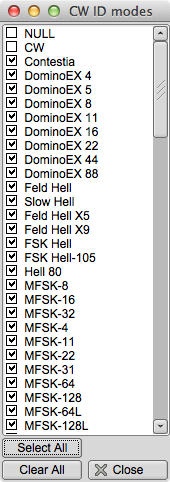Table of Contents
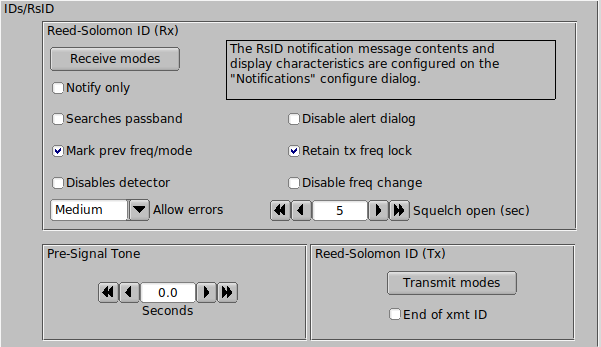
Fldigi offers several ways to identify the operator or mode that is being used. This is particularly useful when using a hard to recognize mode such as Thor, Olivia or MT63.
Reed Solomon Identifier
RSID, Reed Solomon IDentifier is a special transmission designed by Patrick Lindecker, F6CTE, for the modem program MultiPsk. It has been adapted to other modem programs. Fldigi's implementation is compatible with the MultiPsk RSID, but provides a slight variation. You can transmit RSID at both the beginning and end of a transmission. The detection of RSID normally only occurs in the near vicinity of the current waterfall tracking point. This cuts down on extraneous RSID detections when the band is crowded and several RSID signals might be present. If you want fldigi to search the entire waterfall for RSID signals you can do so by enabling the "Detector searches entire passband". You start the search for a signal based on RSID by using the main panel switch. The RSID detector is a separate decoder that operates in parallel with all other modem decoders. If you select the "Mark previous frequency and
mode" a restore link will be inserted into the RX text upon detecting an RSID signal. Clicking on this link restores the previous frequency and mode of operation. You elect to disable the RSID upon first detection. You also have the option of just receiving notification when an RSID signal is detected. The notification occurs with a pop-up message box.
You can select which modes will include the transmitted RS identifier, and which modes will react to a received and decoded RS identifier.
The mode to identifier relationships are selected by pressing the associated "modes" button.
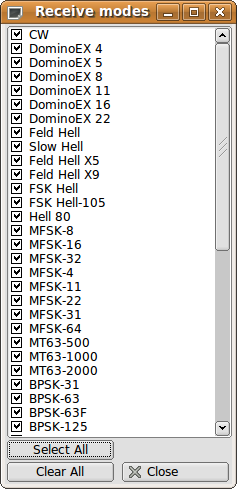
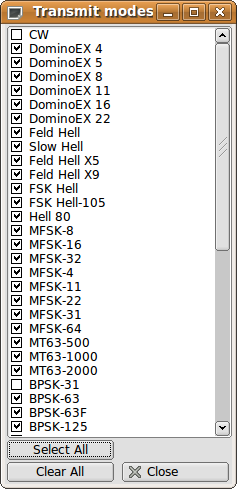
Video Text
Transmitted video text will appear as a sequence of characters on the waterfall.The text can be a brief mode identifier or some user specified text. You can use a small font that always appears as a 2 character wide sequence or a larger font that can be 1 to 4 characters wide. You should be aware that the video signal is a constant energy signal and the content will be spread across multiple characters. The highest s/n at the receiving end will be for 1 character wide video. Small font at 2 character width is next in s/n performance followed by 2 character large font etc. You can select which modes will include the video text preamble. You can limit the horizontal (frequency width) of the video signal in one of several inclusive ways.
- Number of characters per row of text
- Constrain to be less than or equal to 500 Hz
- Constrain to be within the bandwidth limits of the mode in use
Fldigi uses abbreviated acronyms for the mode and it's characteristics when you are transmitting the mode ID using a video text. Here are two examples, one in small and the other in large font.

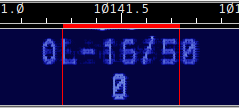
Notice that Olivia 16-500 is abbreviated to OL-16/500 and that the number of characters is limited to 8 per row. You might want to use the large characters by default if you routinely have QSO's with operators using older digital mode programs or one whose waterfall visual is not on a par with fldigi's.

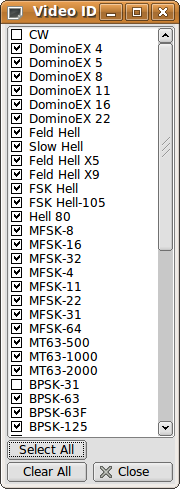
CW Postamble
You can transmit your callsign in CW as a postamble to all modes except of CW (a bit redundant to do that). You can select which modes will include the CW postamble.

